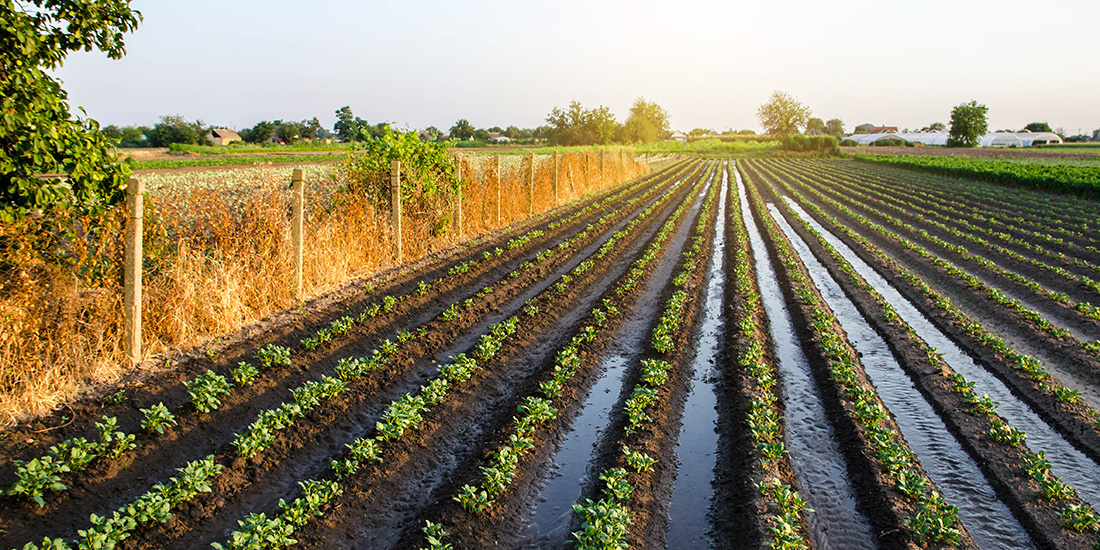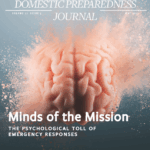On October 4, 2001, shortly after the September 11 terrorist attacks on the U.S., letters that contained anthrax were sent through the mail to Senator Leahy, Senator Daschle, Tom Brokaw, and the editor’s office of the New York Post, killing 5 Americans and causing illness in 17 others. This bioterror attack marked the first case of pulmonary anthrax in the United States in 25 years. It caused confusion and panic and set off a series of investigations and actions designed to improve U.S. defense against these types of attacks moving forward.
The panic and reaction caused by this attack demonstrate the potential for use of this type of agent in terror attacks and hint at potential impacts. While nuclear devices remain a primary concern for terror attacks, biological and other agents are much more accessible, with the United Nations referring to these as “a poor man’s atomic bomb.” These agents can also be synthesized in facilities with legitimate uses or from components much more accessible than nuclear material.
Biological attacks can be focused not only on people, but on the food and agriculture sector, as well. Food and agriculture preparedness commonly focuses on familiar supply chain vulnerabilities, economic factors, and environmental risks. Although there has not been a large-scale, successful attack in the U.S. to this point, the potential of this kind of threat demands consideration and proactive measures to ensure the safety of the homeland.
History of Bioterrorism and Agroterrorism
These types of attacks are not new. Suspected and reported for hundreds of years, these attacks have become an increasing concern to the U.S. in recent years. Below are a few past notable events of agroterrorism in the U.S.
- In 1984, an intentional salmonella contamination by a religious commune in The Dalles, Oregon, affected over 750 people.
- In 1995, an extremist ordered Yersinia pestis, the bacteria that causes bubonic plague.
- In October 2018, envelopes containing ricin, a highly toxic agent previously used in terror plots, were sent to President Donald Trump and officials at the Pentagon. These envelopes were intercepted by the postal service prior to delivery, demonstrating improvements in screening procedures since 2001.
Defining Agroterrorism
The attacks noted above are forms of bioterrorism, which the Centers for Disease Control and Prevention (CDC) defines as the intentional release of viruses, bacteria, or toxins to harm people, livestock, or crops. Under the umbrella of bioterrorism lies agroterrorism, defined by the Federal Bureau of Investigation (FBI) as “the deliberate introduction of an animal or plant disease for the purpose of generating fear, causing economic losses, or undermining social stability.”
Due to the centralization of large food production plants, farming communities, etc., this threat has significantly increased over time. An attack in this manner may affect many facets of society, including public health, economy, social stability, infrastructure, and national security. Some examples of the potential impacts include the following:
- Public Health—The Centers for Disease Control estimates 48 million people get sick and 3,000 die each year due to accidental foodborne illnesses in normal operations. A bad actor could target production or distribution and deliberately spread E. coli, for example, causing sickness, death, and panic as trust in the sector declines.
- Economy—The food and agriculture sector was responsible for over $178 billion in exports in 2023 and contributed more than $1.5 trillion to the U.S. gross domestic product, or approximately 5.5%. This sector also represented more than 10% of total jobs in the U.S. in 2022, per the United States Department of Agriculture (USDA).
- Social—An agroterror attack can instill panic in the population. Not only will people question whether the food is safe, but they also will question the government’s ability to provide safety and security. This can lead to additional social disorganization and create larger issues as citizens seek to obtain safe products.
- National Security—A disruption of social order and internal pressures on government and society, as noted above, also impact national security. An attack on the food and agriculture sector can impact military readiness and supply chains, creating cascading problems or failures.
Meaningful Legislation
With the long history of these threats and the potential impact of a successful attack, the United States implemented several pieces of legislation to address bioterror and agroterror threats in an effort to better secure the homeland. This was an issue of particular focus in the aftermath of the September 11, 2001, terror attacks, specifically, the anthrax sent through the mail, referenced above, and demonstrated vulnerabilities in the nation’s infrastructure.
The anthrax attack in 2001 led to additional conversation and action to better monitor and protect the U.S. food supply. In response to the anthrax attack, the Public Health Security and Bioterrorism Response Act of 2002 (the Bioterrorism Act) was enacted. The Bioterrorism Act revolutionized the agriculture industry by adding regulations and protections for the food supply, including for consumption by humans and animals. The following are a few of its major provisions:
- Required registration of food facilities—All facilities (with a few exceptions) manufacturing, processing, packing, or holding food must register with the U.S. Food and Drug Administration (FDA).
- Required prior notice of any imported food—All food imported (with few exceptions) must have prior notification before it arrives in the United States.
- Regulation of certain biological agents posing risks to both public health and safety and animal health—This includes those that pose a threat to animal health or products (such as swine fever, bird flu, or foot-and-mouth disease), plant health or products, and overlap agents and toxins.
The Food Safety Modernization Act of 2011 (FSMA) was the most significant change to food safety in more than 70 years. The central theme of this legislation was to create a proactive environment regarding food safety and become less reactive. The act covers both human and animal food, and it identified the shared nature of securing the food sector across the global supply chain. This required companies to create food safety plans and proactively prevent contamination, not just address problems as they arise. The FSMA also strives to improve the capacity to detect and respond to potential problems.
The National Infrastructure Protection Plan—issued by the Department of Homeland Security (DHS) in 2006 and updated in 2009 and then again in 2013 to its current version, called Partnering for Critical Infrastructure Security and Resilience—provides a framework for all stakeholders in critical infrastructure to improve security and resilience and manage risk. This plan focuses on the interconnected nature of critical infrastructure and importance of information sharing, integrates across all levels of government, recognizes the important role played by private owners and operators, and reflects the all-hazards approach used across preparedness models and sectors.
In 2017, President Trump signed House Resolution 1238, the Securing Our Agriculture and Food Act, which assigned responsibility for the coordination of food, agriculture, and veterinary safety efforts to the assistant secretary for health affairs at DHS. This bill, like the FSMA before it, sought to create a proactive defense and preparedness posture and end reliance on the traditional, reactive model.
The Largest Threats
Pests, contamination, pathogens, and cybersecurity are the four most probable threats to the food and agriculture sector. Although breaches were not previously considered a weakness in this sector, there is an increased risk of hackers easily stealing and using digital content—such as security measures, import-export routes, cleaning procedures, etc.—to access critical points in the food supply process. In 2021, cyberattacks on the milk processing company Schreiber Foods and the global meat processing company JBS caused supply chain disruptions in the U.S.
One of the most potentially dangerous attack vectors would be the intentional spread of foot-and-mouth disease, which the World Organization on Animal Health defines as “a severe, highly contagious viral disease of livestock that has a significant economic impact.” Experts classified foot-and-mouth disease as eradicated in the U.S. in 1929, but it remains in South America, Africa, and Asia. This disease is 20 times more contagious than smallpox and can transmit airborne between animals for more than 50 miles, though it is not considered a threat to humans. It can survive for a month in the proper environment and may spread well beyond the origin of the outbreak. An outbreak in the UK in 2001 impacted 9,000 farms and led to over four million animals being destroyed. A similar outbreak in the U.S. could halt global trade while the nation deals with contamination and contains the damage.
Prevention and Response Strategies
Prevention strategies must be multifaceted, as successful prevention, or even mitigation, of these threats requires cooperation from government, private sectors, individual stakeholders, and international entities. The legislation mentioned above describes attempts by the government to foster collaboration among these elements, but the role of the private sector is critical. With almost all of the food and agriculture sector under private ownership, and considering the largely voluntary nature of the programs, government agencies must identify and engage with their private-sector partners. Establishing this relationship and identifying needs and vulnerabilities are essential in controlling risks and understanding how to manage and recover from attacks or outbreaks.
International cooperation is imperative in sharing best practices and strengthening preparedness and response activities globally. It also is critical to establish communications regarding outbreaks or current issues that may affect other countries, particularly countries that share borders or have high import-export activities. The World Health Organization (WHO) maintains the Global Outbreak Alert and Response Network, which monitors health threats around the world, verifies them, assesses risk level, and alerts global partners. As noted previously in the Domestic Preparedness Journal, the planned U.S. withdrawal from the WHO may have negative impacts, and alerts and notifications from this network may be among them.
Local entities need to educate, prepare, and equip their teams for potential acts of agroterrorism. The following three strategies can and should be implemented.
Surveillance and Monitoring
- Create databases to include pathogens, pests, and contaminants relevant to agriculture.
- Implement remote sensing, drones, and artificial intelligence to monitor agricultural areas for suspicious activities.
- Create a means of rapid reporting and communication.
Security Measures
- Use strict hygiene protocols to prevent the spread of disease.
- Control access.
- Disinfect equipment, vehicles, and premises to minimize contamination.
Emergency Response
- Create strong policies, procedures, and protocols that cover containment and destruction of outbreaks.
- Ensure availability of resources and equipment, which may require collaboration and partnerships with adjoining areas.
- Collaborate within the community, including local farms in emergency planning groups.
The FDA and U.S. Department of Agriculture (USDA) worked with the FBI to develop the Criminal Investigation Handbook for Agroterrorism, published in July 2008. The opening section of the handbook identifies response agencies in case of an emergency, highlighting the need for proactive planning and communication for these types of events. The guide also outlines potential barriers and responses that will be encountered in the investigation of these types of events. It is important to note, however, that the handbook has not been updated since its creation in 2008. With the lapse in time, local agencies must conduct their own research to implement any new statutes and directives while creating their response plan. This handbook lists the FBI’s Weapons of Mass Destruction Directorate, the local FBI office, the Joint Terrorism Task Force, the FDA, the USDA, and local agencies as options for response.
Additional tools are available to response agencies outside of law enforcement, including the Food and Agricultural Incident Annex to the Response and Recovery Federal Interagency Operational Plans. This document helps outline roles and responsibilities across levels of government and within private industry in the event of an outbreak or incident in the food and agricultural sector. This builds on the National Preparedness Goal, “a secure and resilient nation with the capabilities required across the whole community to prevent, protect against, mitigate, respond to, and recover from the threats and hazards that pose the greatest risk.” To achieve that goal, emergency managers should review the all-hazards approach and evaluate risks posed to their local communities to determine next steps and best practices.
While evaluating the risks, special attention should be paid to vulnerabilities in the food and agriculture sector, including concentrated and intensive farming practices, increased susceptibility of livestock to disease, insufficient security and surveillance, limitations in disease and risk reporting, and a lack of training within and attention to this sector. Agencies should also be aware of the lack of coordination among critical infrastructure sectors, particularly the relative isolation of the food and agriculture sector in mitigation and preparedness planning. With so much of the sector in private hands, preparedness leaders must take extra steps to engage stakeholders and incorporate them into planning efforts.

Dan Scherr
Dan Scherr holds a Ph.D. in public policy administration with a terrorism, mediation, and peace focus. He is an assistant professor in criminal justice and homeland security at the University of Tennessee Southern and program coordinator for the cybersecurity program. He is also a co-director of the honors program. He is a certified fraud examiner and Army veteran who served stateside during the September 11 attacks and has over two decades of experience in homeland security and operations.
- Dan Scherrhttps://disasterpreparedness.kinsta.cloud/author/dan-scherr
- Dan Scherrhttps://disasterpreparedness.kinsta.cloud/author/dan-scherr
- Dan Scherrhttps://disasterpreparedness.kinsta.cloud/author/dan-scherr
- Dan Scherrhttps://disasterpreparedness.kinsta.cloud/author/dan-scherr

Tanya M. Scherr
Tanya Scherr holds a Ph.D. in public policy administration with a healthcare and emergency preparedness focus. She is an associate professor in healthcare administration for the University of Arizona and has three decades of healthcare experience. Along with being a certified fraud examiner since 2011, she is also a former firefighter–emergency medical technician (EMT), previously licensed in several states, and held national certification. She has held several executive and board of director positions for community nonprofits that focus on women’s equality, domestic violence, and sexual assault.
- Tanya M. Scherrhttps://disasterpreparedness.kinsta.cloud/author/tanya-m-scherr
- Tanya M. Scherrhttps://disasterpreparedness.kinsta.cloud/author/tanya-m-scherr
- Tanya M. Scherrhttps://disasterpreparedness.kinsta.cloud/author/tanya-m-scherr
- Tanya M. Scherrhttps://disasterpreparedness.kinsta.cloud/author/tanya-m-scherr






